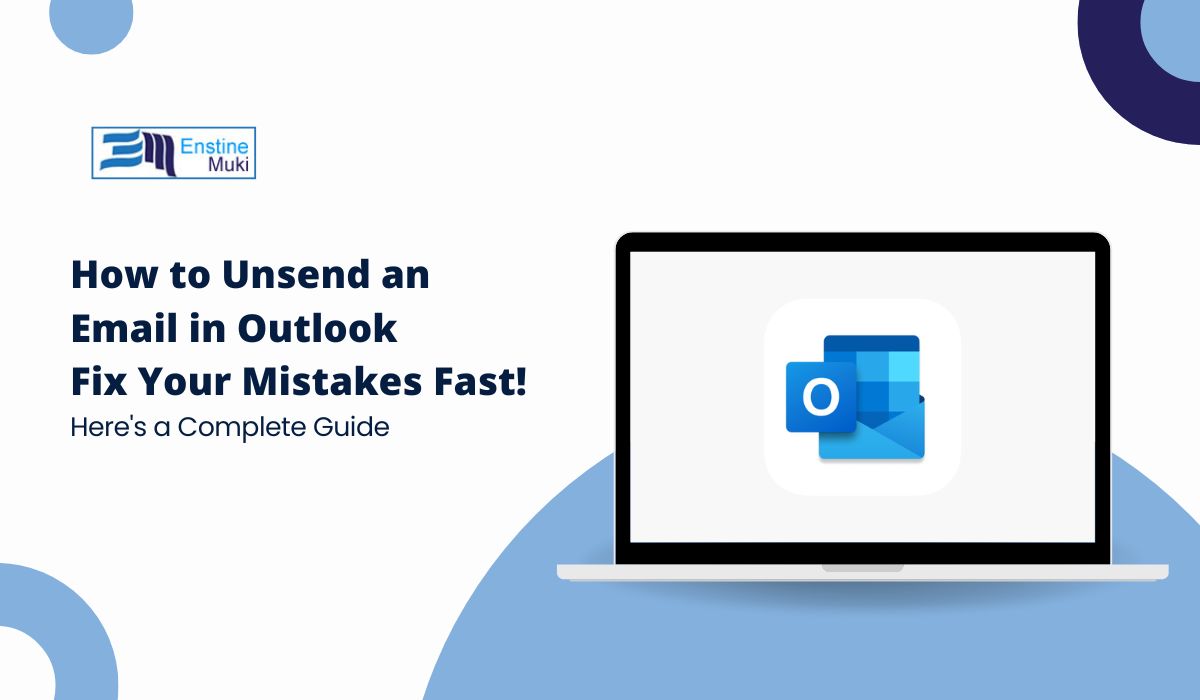In today’s fast-paced email communication, mistakes are common—such as sending an email to the wrong person, forgetting attachments, or accidentally sharing sensitive information. The “unsend” or recall feature in Outlook can help fix these errors by allowing users to retrieve or recall emails before they cause issues, potentially preventing embarrassing situations or security risks.
This article will guide you through the different methods to unsend an email in Outlook, as well as offer tips for using these features effectively.
Understanding the Unsend Feature in Outlook
Outlook’s unsend feature allows you to recall an email before it reaches the recipient’s inbox. While this can correct mistaken sends, it has limitations. The recall feature works best if both you and the recipient use Microsoft Exchange or Microsoft 365 within the same organization. Additionally, it only works if the recipient hasn’t opened the email, and its success can depend on your server’s settings.
Understanding these constraints will help you determine when the unsend feature is useful and when it may not be reliable.
How to Unsend an Email in Outlook
Steps to Unsend an Email in your Outllok:
Method 1: Using the Undo Feature
Outlook’s Undo Send option lets you cancel an email immediately after clicking “Send.” This feature is available on Outlook.com and works within a brief time window after sending.
Steps to Use the Undo Feature:
- Compose your email and click Send.
- A message will appear at the bottom of the screen, offering an option to Undo Send.
- Click Undo within the time limit (usually 5–10 seconds, depending on your settings).
This feature is helpful for quick mistakes, but it must be used within seconds of sending the email.
Method 2: Using the Recall Feature (Outlook Desktop)
Outlook’s desktop version offers a more advanced tool for unsending emails called Recall This Message. However, it only works under certain conditions—both you and the recipient must be using Microsoft Exchange or Microsoft 365 accounts, and the email must be unopened.
Steps to Recall an Email Using Outlook Desktop:
- Open Outlook and navigate to your Sent Items folder.
- Double-click the email you wish to recall.
- In the Message tab, click Actions and select Recall This Message.
- Choose one of the following options:
- Delete unread copies of this message.
- Delete unread copies and replace with a new message.
- Confirm your choice, and you’ll receive a notification about the recall status.
Note that the recall will only work if the email has not been opened. Once opened, the recall feature will fail.
Additional Tips and Considerations
Best Practices for Using the Unsend Feature:
- Act Fast: The quicker you attempt to recall an email, the more likely it is to succeed. Use the unsend feature immediately after realizing a mistake.
- Understand Its Limitations: The unsend feature works best in corporate environments where both parties use Microsoft Exchange. It’s less reliable for emails sent to external domains like Gmail or Yahoo.
- Use Sparingly: Overusing the unsend feature can cause delays and confusion. It’s better to double-check your email before hitting “Send” to reduce the need for recalls.
Troubleshooting Common Issues
If the unsend feature fails, it’s likely due to one of the following reasons:
- Email Already Opened: Once the recipient opens the email, recall is no longer possible.
- External Recipients: The recall feature rarely works for emails sent to people outside your organization or who aren’t using Microsoft Exchange.
- Recall Failure: If the recall fails, you’ll receive an error notification. In this case, consider sending a follow-up email with corrections or clarification.
Conclusion
In conclusion, Outlook’s unsend feature is a valuable tool for correcting email errors. Whether you use the fast Undo Send option or the more advanced Recall This Message feature, knowing when and how to use these tools can help avoid miscommunication and protect your privacy. Use these features responsibly, and always review your messages before sending to reduce the need for recalls.
For further assistance, consult Microsoft’s official documentation or contact support to resolve any specific issues.
